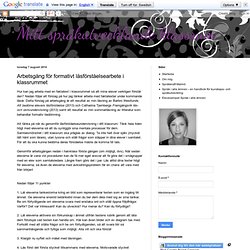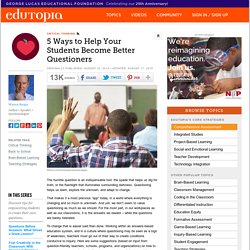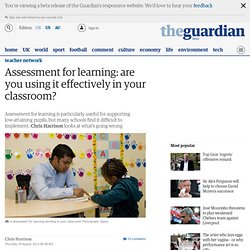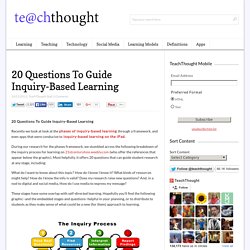

Critical-thinking-guide.png (666×586) Exit Tickets: Making Learning Effective. Arbetsgång för formativt läsförståelsearbete i klassrummet. Hur kan jag arbeta med en faktatext i klassrummet så att mina elever verkligen förstår den?

Nedan följer ett förslag på hur jag tänker arbeta med faktatexter under kommande läsår. Detta förslag på arbetsgång är ett resultat av min läsning av Barbro Westlunds Att bedöma elevers läsförståelse (2013) och Catharina Tjernbergs Framgångsrik läs- och skrivundervisning (2013) samt ett resultat av min sommarläsning av litteratur som behandlar formativ bedömning. Att tänka på när du genomför läsförståelseundervisning i ditt klassrum: Tänk hela tiden högt med eleverna så att du synliggör sina mentala processer för dem. Samtalsmönstret i ditt klassrum ska präglas av dialog. Ta inte helt över själv (mycket lätt hänt som lärare), utan lyssna och ställ frågor som släpper in dina elever i samtalet.
Genomför arbetsgången nedan i halvklass första gången (om möjligt, dvs). Nedan följer 11 punkter: 1. 2. 3. 4. 5. 6. 7. Lärandets idéhistoria: Dylan Wiliam om lärandets vitala verktyg. Six Scaffolding Strategies to Use with Your Students. What’s the opposite of scaffolding a lesson? Saying to students, “Read this nine-page science article, write a detailed essay on the topic it explores, and turn it in by Wednesday.” Yikes! No safety net, no parachute—they’re just left to their own devices. Let’s start by agreeing that scaffolding a lesson and differentiating instruction are two different things. Scaffolding is breaking up the learning into chunks and providing a tool, or structure, with each chunk.
Simply put, scaffolding is what you do first with kids. Scaffolding and differentiation do have something in common, though. Bedömning. 7 Effective Templates For Teacher Feedback. Feedback in the classroom is often one-sided: the teacher gives feedback and the student receives it, generally relating to the quality of their work.

Depending on the level of the students you teach, you may find yourself subject to student evaluation, but generally that only comes once a semester (at least at the university level), and generally when the course is completed and grades are either done or almost done. When I was a teacher, some of the most useful feedback I got was from my students at the end of the semester. Often times, I would read the course evaluations and wish that the students had told me what they were thinking before so that I could tweak something, add something, quit doing something that wasn’t working, etc. Especially as a new teacher, that feedback was super helpful. 5 Ways to Help Your Students Become Better Questioners. The humble question is an indispensable tool: the spade that helps us dig for truth, or the flashlight that illuminates surrounding darkness.

Questioning helps us learn, explore the unknown, and adapt to change. That makes it a most precious “app” today, in a world where everything is changing and so much is unknown. And yet, we don’t seem to value questioning as much as we should. For the most part, in our workplaces as well as our classrooms, it is the answers we reward -- while the questions are barely tolerated. To change that is easier said than done. How to Encourage Questioning 1. Asking a question can be a scary step into the void. 7 Things To Remember About Classroom Feedback.
Assessment for learning: are you using it effectively in your classroom? Engagement and effort are essential characteristics of good learners.

Research indicates that children who start school socially and academically ahead of their peers tend to be more successful in school. This results in an achievement gap, which widens as children move through the school system if it persists. One of the factors that can influence this is the way assessment is perceived by youngsters who start at a disadvantage; it can either strengthen or break their belief in their capabilities.
Schools in England have become data driven; teachers are heavily influenced by the need to produce summative performance data to assess school effectiveness, set targets and monitor standards. Most schools have amalgamated this into their regular monitoring systems with teachers being asked to report on achievement every few months. Assessment need not have this effect on learners if teachers focus their efforts on formative assessment, which supports learning rather than judging achievement. 20 Questions To Guide Inquiry-Based Learning. 20 Questions To Guide Inquiry-Based Learning Recently we took at look at the phases of inquiry-based learning through a framework, and even apps that were conducive to inquiry-based learning on the iPad.

During our research for the phases framework, we stumbled across the following breakdown of the inquiry process for learning on 21stcenturyhsie.weebly.com (who offer the references that appear below the graphic). Most helpfully, it offers 20 questions that can guide student research at any stage, including: Verktyg för formativ bedömning. Formativ bedömning gör lärande synligt. Formativ bedömning gör lärande synligt. Formativ bedömning gör lärande synligt. Individuellt samtal elev lärare 2. Genrepedagogik. SKOLA. Bedömning. Forskning om undervisning och lärande. Förmågorna. Big 5/BFL. BFL - Lilla Edet. BFL-15. BFL och lärande, andras saml o bloggar. BFL, Formativ bedömning, betyg, värdegrund, mm. Allmänt om BFL. Kartläggning och likvärdig bedömning BFL. BFL Nyckelstrategier.
BFL. BFL-15.